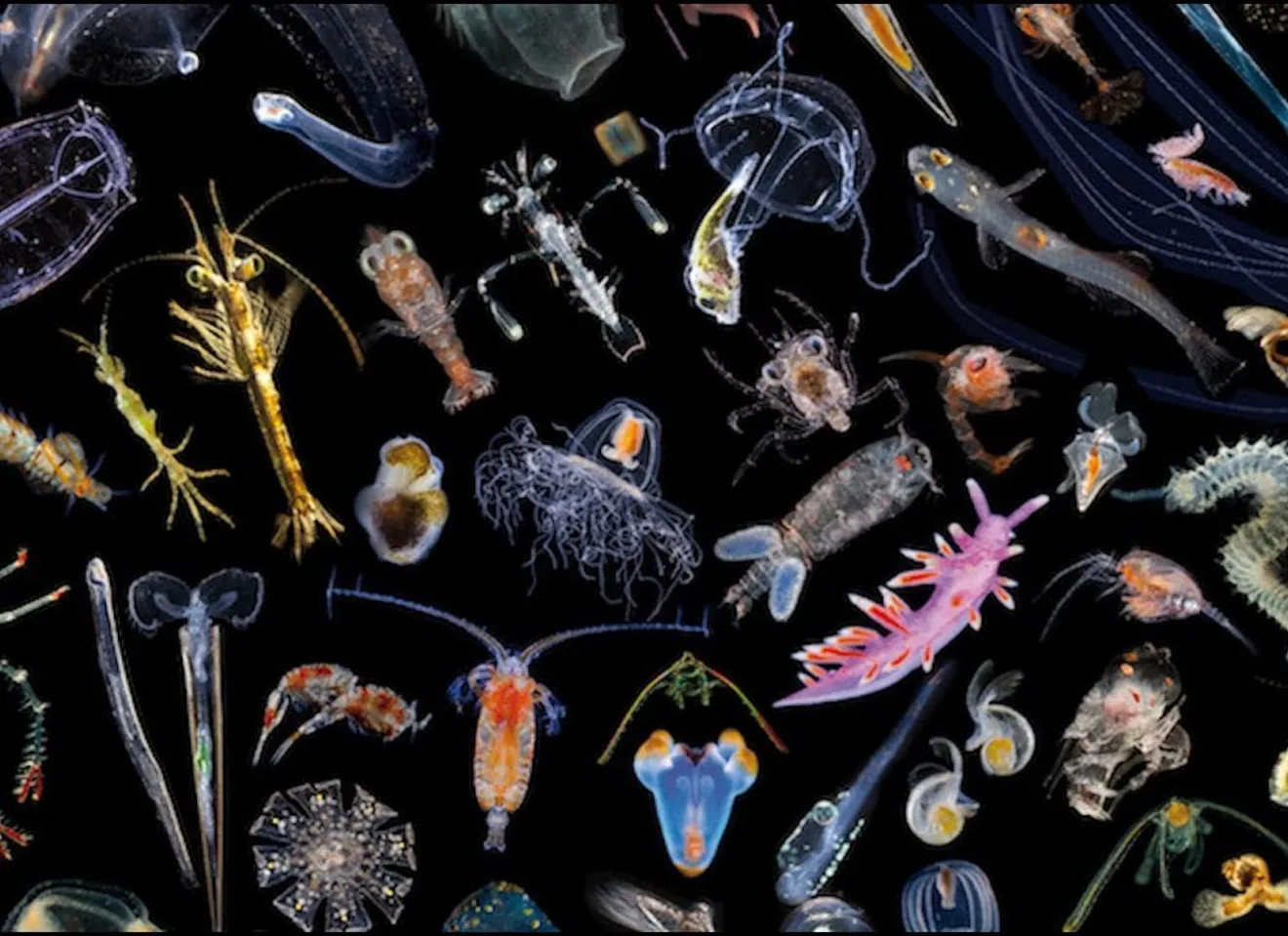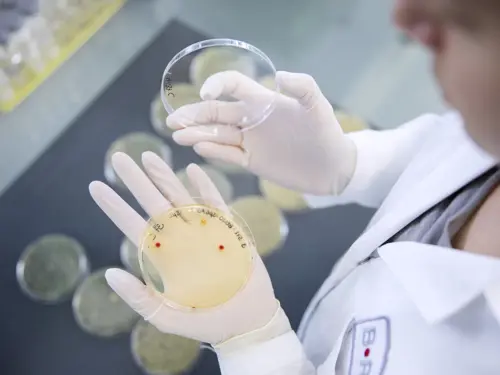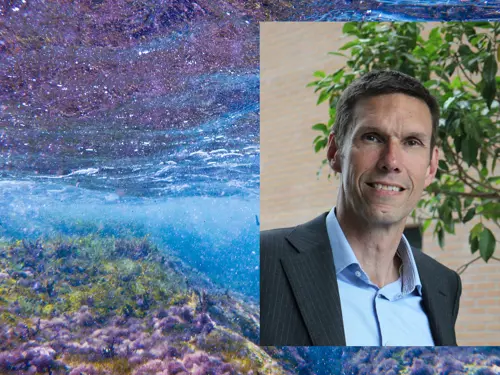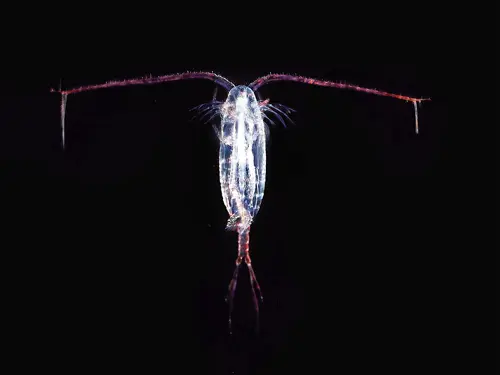
Kursinnsikt
The world’s largest, untapped biomedical resource
On a sailing boat inspired by Nansen’s polar ship Fram, a research team collected microorganisms from all over the world for a massive data set. It could be the foundation of medical breakthrough. And guilt-free laundry.
Chris Bowler, the Director of Research at the Institut de Biologie de l'Ecole Normale Supérieure in Paris (IBENS) is, as many of his peers, concerned about the impact climate change has on the ocean, as well as the amount of microplastic drifting with the currents. He has seen it, as well as the unexpected consequences of it.

“The ocean is sick,” he says, merely as a matter of fact, via Zoom from lockdown in Paris.
At the beginning of the 2010s, The Tara Oceans expedition – «a four-year circumnavigation of the world’s oceans to explore the functional biodiversity of marine microscopic life» as IBENS describes it – sampled plankton at 210 sites, gathering information for a huge, multidisciplinary data set that sheds light on the biodiversity of the world’s oceans.
One of the outcomes of that expedition, named – like the ten other expeditions undertaken by the vessel – after the Tara schooner that carried the research team, which in turn was modeled on Nansen’s polar ship Fram, was a baseline ecological context to track the impact of climate change on the oceans.
Their discoveries have been instrumental in alerting the public of the repercussions of our excessive and plastic-driven lifestyle.
However, Bowler is keen to point out that in order to fully comprehend the true repercussion of human interference on the oceans’ biodiversity, further research is needed over a longer stretch of time. Nevertheless, he has seen how this interference disrupts fragile ecosystems, as well as nature’s way of fighting back.

“Microbes have a way of adapting to human activities that is quite striking,” he says.
One of the things they noticed was the amount of antibiotic-resistant genes in microbes, related to our excessive use of antibiotics. The team found these genes pretty much everywhere, but in greater numbers around big cities, and so they could compare the abundance of these genes in areas around, say, Bombay with the area around New York.
“This really could be a problem for how we fight diseases in the future. A global problem,” Bowler says.
Plastic-eating bacteria to the rescue?
Then there’s the plethora of microplastics, and surprisingly, the life that comes with it. When Bowler and his team took some plastic out of the ocean, they saw that it was completely covered in bacteria and other microorganisms.
“It’s like watching evolution in action.”
There are genes, new enzymes that help degrade the plastic. Bacteria eating carbon, which plastic has plenty of. It’s biology learning how to decompose man-made materials.
The need for a solution to the world’s oceanic plastic problem is dire. As such, the discovery of plastic-eating bacteria created somewhat sensational headlines in mainstream media. Not that we should count on bacteria to solve our problems on their own. It’s a dreadfully slow process which requires a lot of energy.
“If we left it to the natural bacteria to evolve ways of doing this themselves, it might take many thousands of years. But you know, maybe we humans can utilise a sort of bio-prospecting approach and say ‘okay, let’s go look for these genes and put them all together’, and perhaps then develop an industrial process that will break down the plastic much more efficiently than the bacteria could on their own,” Bowler says.
Get inspired, join us at the international BIOPRSP_21 conference!
Huge affection for tiny plants
He has always been fascinated by the natural world. After nurturing an interest in biology since he was very young, Bowler initially started working with plants, over time getting more and more interested in ocean-based, single-cell microscopic plants («they are just as important as the plants on land in terms of generating food that feeds the food chains for the rest of the organisms» he says). And so he started studying them 30 years ago, seeing that there were a lot of questions that nobody knew the answers to.
“I thought maybe we could address these questions using new technologies, for example DNA sequencing,” he says.
After years of studying in labs, Bowler realised he needed to study the organisms in their natural state. The Tara Oceans project gave him the opportunity to see if his knowledge from the laboratory made any sense in the real world.
They sampled the oceans globally, using standardized methods to look at plankton communities. They were able to get complete descriptions of ecosystems, and compare ecosystems from different parts of the world with one another, which had never really been done before. By doing so, they were able to piece together a global data set for a truly global subject.
“Researchers working in terrestrial systems like forests or fields, have one particular location where they study very intensively what is happening, but they don't really have a global perspective because different people use different methods to study their favorite field or whatever,” Bowler says.
The ocean on the other hand, is without boundaries.
“If you‘re a tree living in the Amazon, it's very unlikely that you will find yourself in the forest in Congo one week later. Whereas in the ocean, if you're a plankton out in the bay in Oslo, at some time in the future, you could end up in the Mediterranean, or you could end up in Antarctica. Everything is connected.”
Biochips and dirty laundry
The Tara team described around 130,000 different kinds of eukaryotes, about 35,000 kinds of bacteria and 200,000 different kinds of viruses. A whole new world of organisms, which they hope could be applied in industrial and biomedical segments.
For example, wIth the application of CRISPR-technology, researchers can go into the Tara Oceans data set, find unique and untapped genes discovered amongst the plankton and start manipulating them – even for something all the more mundane, like washing powder – a well-known fiend of the environment.
In the ocean there are enzymes such as lipases and proteases that work best at cold temperatures, which can be incorporated into eco-friendly washing powders that work best in cold water. “That would save a lot of energy!” Bowler says.
On a more advanced level, Bowler hopes these discoveries could be used for biochips:
Some of the organisms they discovered are able to build nanometer-scale silica structures, impossible for humans to produce. By learning from these organisms, researchers could for example develop new silica structures in micro-computing.
“This could be very important in the process of introducing drugs into the bloodstream of a patient,” says Bowler.
“Now, if you take a drug, that drug is immediately active, and after maybe one day or less it is gone. But if we could develop a slow-release system where a drug is slowly portioned out over several days, weeks or months ... that would be a huge breakthrough.”
“Do you feel the general public knows about the potential utilisations of these microorganisms?”
– In general, I don't think they do, although there are more and more examples of drugs that we identify from marine organisms that are used in for example cancer research.
But it’s quite a largely unrecognized resource, which people are slowly beginning to appreciate. It stems from the fact that there is such an amazing diversity of life in the ocean that is largely undiscovered and unexplored. So by learning more about these organisms, we can find new approaches to use them.



